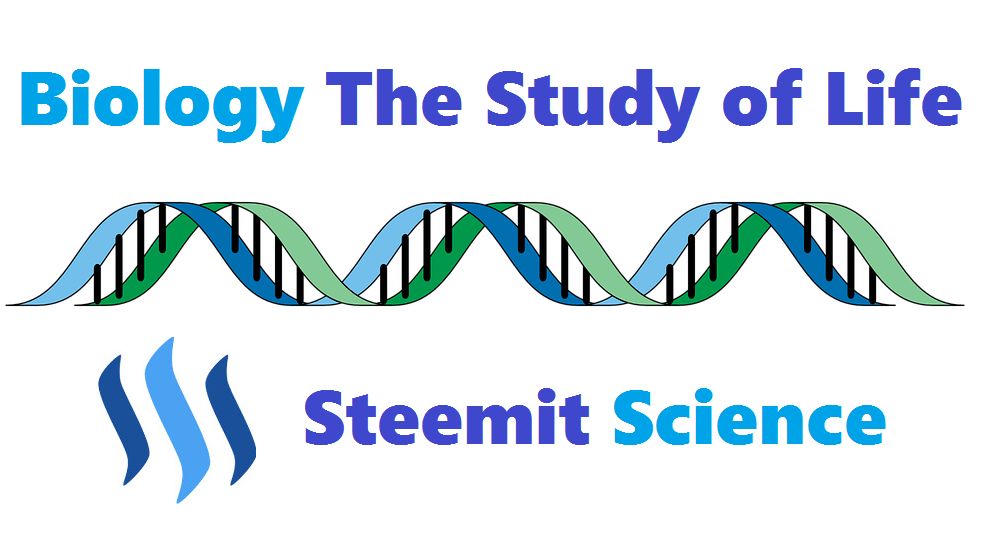
Introduction
This informative series of posts will explore modern biology; the fundamental principles of how living systems work. This material will always be presented at the level of a first-year college biology course, without assuming any prior background in biology or science. It also presents material in a conceptual format. Emphasizing the importance of broad, unifying principles, facts and details in the context of developing an overarching framework. Finally, the series takes a historical approach wherever possible. Explaining how key experiments and observations led to our current state of knowledge and introducing many of the people responsible for creating the modern science of biology.
This post continues the discussion of Mendel’s contributions to genetics, turning to subsequent experiments in which Mendel looked at the transmission of more than one trait, leading to his Law of Independent Assortment.
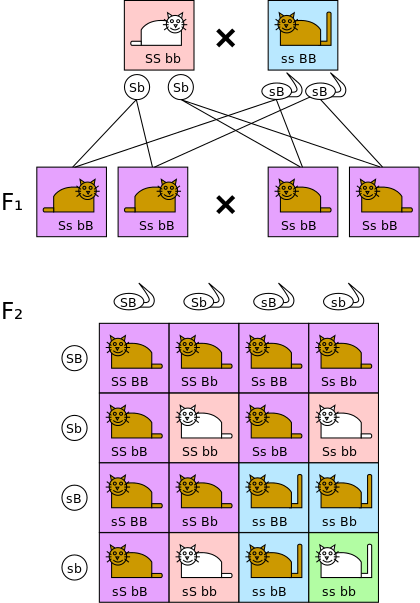
The post summarizes independent assortment, linkage, and crossing over, all of which result from the way chromosomes and the genes located on them move during gamete formation and sexual reproduction. The post concludes by recapping the sources that contribute to genetic variation in the replication of DNA and the transmission of traits from one generation to the next, variation that is essential for evolution to occur.
Mendel continued his experiments by crossing pea plants that had two phenotypic differences instead of one.
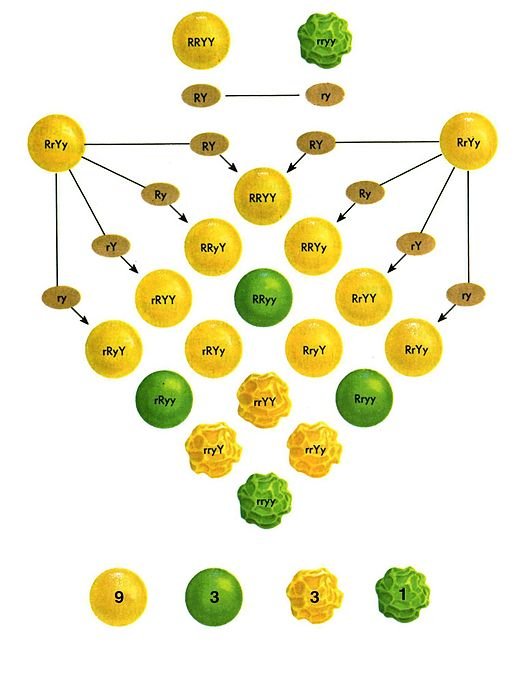
From these dihybrid crosses, Mendel inferred additional properties of trait transmission from parents to offspring, properties consistent with knowledge gained later about the movement of genes on chromosomes. As with flower color, seed color in pea plants depends on a single gene with two alleles: the dominant yellow allele (Y) and the recessive green allele (y).
For example, when crossing a female pea plant with red flowers and yellow seeds with a male pea plant with white flowers and green seeds, we know that the female genotype is RRYY and the male genotype is rryy. F1 individuals will all have red flowers and yellow seeds, because they are all heterozygous for both traits. As in the monohybrid cross, the recessive traits “disappear” in F1.
When F1 individuals make gametes, do the alleles from the original parents stay together or are they separately mixed?

If parental alleles are linked, an F1 individual could produce only YR and yr gametes; F2 would then contain only the two parental phenotypes. Furthermore, these phenotypes would have the same 3:1 ratio as in the monohybrid cross. This would mean that sets of parental alleles essentially acted as single alleles.
If parental alleles are not linked, F1 individuals would produce four types of gametes in equal proportion: YR, yr, Yr, and yR.
A Punnett square using these gametes results in 16 possible combinations and 9 distinctive F2 genotypes.
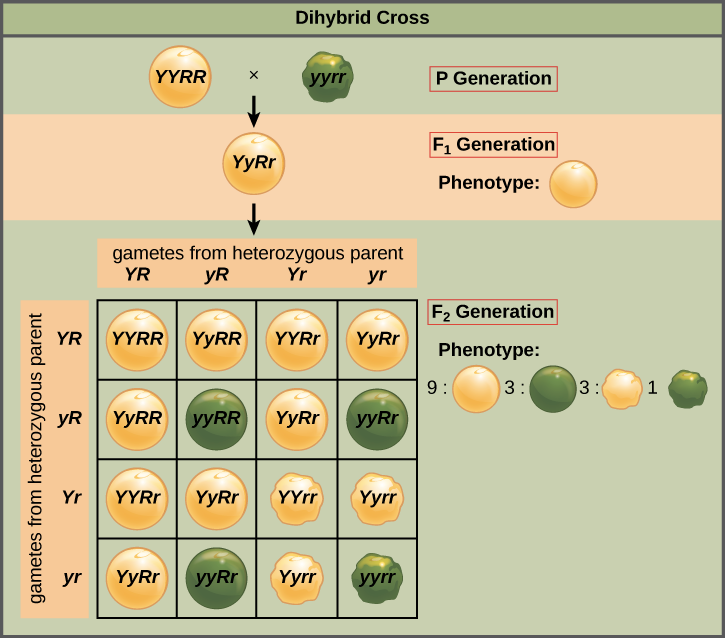
These 9 genotypes would produce 4 possible phenotypes, which would occur in a 9:3:3:1 ratio. Two of these phenotypes would not have existed in the parental generation; these are called recombinant phenotypes. Mendel observed 4 phenotypes in a 9:3:3:1 ratio in his F2 generation which he correctly concluded to mean that alleles are inherited independently of each other. From this conclusion, Mendel formulated what is now known as the Law of Independent Assortment, which simply says that alleles of different genes segregate independently of each other during gamete formation.
Independent assortment of genes during meiosis is an important source of genetic variation.

During the first meiotic division, homologous pairs of chromosomes line up in the cell and are separated into two daughter cells. The assortment of maternal and paternal homologs for one chromosome has no effect on the assortment of any other chromosome. If the genes for two different traits are on different chromosomes, they will assort independently of each other, as Mendel saw, and independent assortment produces recombinant phenotypes. The number of unique combinations of alleles on different chromosomes can be very high. Humans have 23 homologous pairs of chromosomes; thus, the possible number of assortments is 2²³ or about 8.4 million.
Independent assortment is different from mutation as a source of variation.
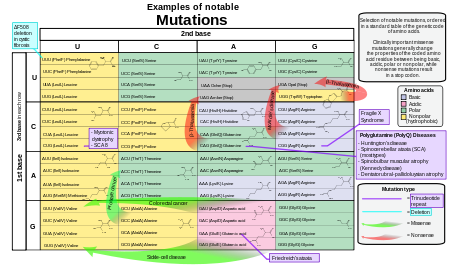
Mutations essentially generate new alleles which are usually dysfunctional but not always. Independent assortment does not create new alleles but, rather, new assortments of alleles. However, both mutation and independent assortment can change the phenotypes of successive generations.
If two genes occur on the same chromosome, an obvious conclusion is that they will be transmitted together as a unit during meiosis.

Such genes are called linked genes. During meiosis, however, homologous pairs of chromosomes associate so closely that they can exchange genetic material, which is called crossing over. If linked genes cross over to other chromosomes, they can assort independently. Geneticists expanding on Mendel’s work found that in dihybrid crosses, F2 generations with linked genes would occasionally produce recombinant phenotypes, though a far fewer number than if the genes were unlinked. Linked genes, however, should not produce any recombinant phenotypes. The farther apart two genes are on a chromosome, the more likely crossing over and recombinant phenotypes will be.
Though he essentially established the science of genetics, Mendel’s work was ignored for about 40 years because nothing was then known of the physical basis of Mendel’s “heritable factors” and because he used advanced probability mathematics to calculate his ratios. Only when biologists began to see the patterns Mendel described did anyone realize that his work might be significant.
END PART 16
BIOLOGY THE STUDY OF LIFE:
PART 1 INTRODUCTION
PART 2 WHAT IS LIFE
PART 3 ORIGIN OF LIFE
PART 4 CELL TO ORGANISM
PART 5 PROTEINS
PART 6 CODE OF LIFE
PART 7 DOUBLE HELIX
PART 8 REPLICATING DNA
PART 9 CENTRAL DOGMA
PART 10 GENETIC CODE
PART 11 DNA TO RNA
PART 12 RNA TO PROTEINS
PART 13 MISTAKES HAPPEN
PART 14 WHEN CELLS DIVIDE
PART 15 MENDEL'S PEA PLANTS
PART 16 SEX AND VARIATION


 or
or  @pjheinz
@pjheinzImage Credits:
ALL IMAGES UNLESS NOTED - Wikipedia
